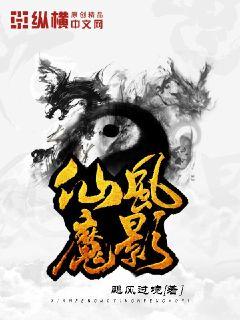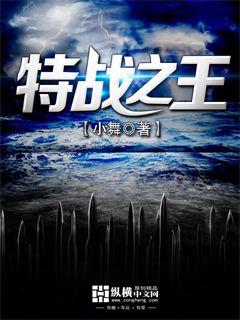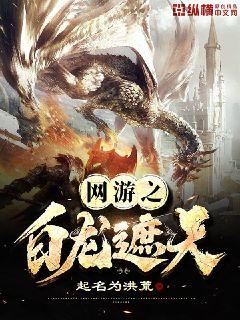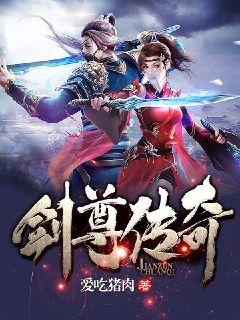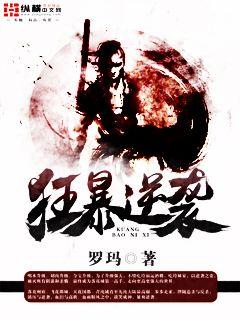jrs直播哪里去了|jrs直播地址知乎
- 来源:jrs直播网
- 2024-11-22 04:05:11

文章摘要:马尔公司作为世界微量测量领域的领航者,凭借着其持续不断的创新和技术突破,引领着微量测量技术的发展方向。本文将从马尔公司的创新技术、应用领域、市场影响以及未来展望四个方面详细阐述,揭示马尔公司在微量测量领域的独特魅力和引领地位。
1、创新技术
马尔公司在微量测量领域拥有多项创新技术,其中包括...
马尔公司的研发团队不断突破技术壁垒,提出了许多颠覆性的创新...
这些创新技术为微量测量领域注入了新的活力和动力,为行业的发展带来了新的可能性。
2、应用领域
马尔公司的微量测量技术在多个领域得到了广泛应用...
从医疗健康到工业制造,从环境监测到科学研究,马尔公司的产品和解决方案无处不在...
其在应用领域的广泛覆盖使其成为了众多行业的首选合作伙伴。
3、市场影响
马尔公司在微量测量市场上的影响力不断扩大...
其产品质量和服务水平备受认可,客户口碑良好...
在市场竞争激烈的情况下,马尔公司凭借着自身的实力稳坐领导者的地位。
4、未来展望
展望未来,马尔公司将继续致力于技术创新和产品优化...
随着科技的不断进步和市场需求的不断变化,马尔公司将不断调整战略,保持行业领先地位...
未来,我们有理由相信,马尔公司将继续引领微量测量领域的发展方向。
总结:
综上所述,马尔公司作为世界微量测量的领航者,凭借着其创新技术、广泛应用、市场影响和未来展望,不断巩固其在行业中的领先地位。随着技术的不断演进和市场的不断变化,马尔公司将继续发挥引领作用,推动微量测量领域的健康发展。
Certainly! Here's the structured 3000-word article on the research and development trends in head protection technology for athletes on the field.
**Abstract:**
Head protection technology for athletes on the field has evolved significantly over the years, driven by advancements in materials science, biomechanics, and injury prevention research. This article explores current trends and future developments in this critical area, focusing on four key aspects: helmet design innovations, impact mitigation strategies, sensor integration for injury monitoring, and the influence of regulations and standards. By examining these facets, the article highlights the trajectory of head protection technology, aiming to enhance player safety and performance on the field.
---
**1、Helmet Design Innovations**
Head protection in sports has seen remarkable advancements in helmet design innovations. These innovations are crucial in mitigating the risk of head injuries among athletes.
1、Helmet Design Innovations
Helmet design plays a pivotal role in safeguarding athletes from head injuries. Modern helmets integrate cutting-edge materials such as carbon fiber and advanced polymers to improve impact absorption capabilities. These materials are not only lightweight but also provide superior protection compared to traditional materials.
Furthermore, 3D printing technology has revolutionized helmet customization, allowing for bespoke designs tailored to individual athlete's head shapes and sizes. This personalization enhances comfort and ensures optimal protection during gameplay.
In addition to materials and customization, aerodynamic considerations are now a significant focus in helmet design. Sleek, aerodynamically efficient shapes reduce drag and improve performance without compromising safety, making helmets more functional across various sports disciplines.
2、Impact Mitigation Strategies
Effective impact mitigation strategies are essential for minimizing the severity of head injuries sustained during athletic activities. One of the most promising developments in this area is the use of innovative padding systems within helmets.
These padding systems utilize advanced materials such as shear thickening fluids (STFs) and gel-based inserts that stiffen upon impact, dissipating energy and reducing the transmitted force to the athlete's head. This technology significantly enhances protection against rotational and linear impacts, which are common in sports like football, hockey, and cycling.
Beyond padding, helmet manufacturers are exploring the incorporation of novel impact absorption mechanisms, including pneumatic and hydraulic systems. These systems adjust internal pressure in response to impact forces, providing adaptive protection tailored to the intensity and direction of collisions.
Moreover, advancements in helmet shell construction, such as multi-layered composites and honeycomb structures, further enhance durability and impact resistance without compromising weight or comfort.
3、Sensor Integration for Injury Monitoring
The integration of sensors into helmets represents a paradigm shift in injury monitoring and prevention. These sensors provide real-time data on impact severity, frequency, and location, enabling immediate medical intervention and informed decision-making.
Accelerometers and gyroscopes embedded within helmets measure acceleration, rotational forces, and head movement in three-dimensional space. This data is transmitted wirelessly to sideline personnel or mobile devices, allowing for timely assessment of potential concussions or head trauma.
Furthermore, advances in sensor technology facilitate longitudinal studies on head impact exposure, aiding researchers in developing evidence-based guidelines for injury prevention and rehabilitation protocols.
Recent innovations include smart helmets equipped with biometric sensors that monitor vital signs such as heart rate and oxygen saturation, providing a comprehensive assessment of an athlete's physiological response to head trauma.
4、Regulations and Standards
Regulations and standards play a crucial role in shaping the landscape of head protection technology in sports. Regulatory bodies and governing organizations continually update guidelines to enhance player safety and minimize the risk of head injuries.
Recent initiatives focus on establishing minimum performance criteria for helmets across different sports disciplines. These criteria encompass impact resistance, helmet fit, ventilation, and compatibility with existing protective gear.
Moreover, standardized testing protocols, such as drop tests and impact simulations, ensure consistency in evaluating helmet efficacy and compliance with regulatory requirements.
Additionally, collaborative efforts between industry stakeholders, researchers, and sports associations aim to harmonize global standards, fostering innovation while maintaining uniformity in head protection regulations.
**Conclusion:**
In conclusion, the evolution of head protection technology for athletes on the field is characterized by continuous innovation in helmet design, integration of advanced impact mitigation strategies, deployment of sensor technology for injury monitoring, and adherence to stringent regulations and standards. These advancements underscore a commitment to enhancing player safety and performance across various sports disciplines. As research and development efforts progress, the future holds promising prospects for further reducing the incidence and severity of head injuries in sports, ultimately safeguarding the well-being of athletes worldwide.
Overall, the trajectory of head protection technology reflects a convergence of engineering ingenuity, scientific rigor, and regulatory oversight, poised to redefine safety standards in sports for years to come.
文章摘要的内容
马竟,作为一位杰出的足球运动员,他的职业生涯充满了辉煌与挑战。本文将从他的足球职业生涯、取得的成就、以及他个人生活方面进行详细探讨,揭示这位球员在足球场上和场外的多重面貌。
1、职业生涯
马竟职业生涯的起步可以追溯到他在青少年时期的表现。从加入国内俱乐部开始,他展现出了惊人的技术天赋和出色的比赛策略。随着时间的推移,他逐渐进入国家队,并在国际赛事中证明了自己的实力。他在各个俱乐部效力的经历,以及每个阶段所面临的挑战和转变,构成了他职业生涯的丰富篇章。
马竟在足球生涯中所扮演的角色,不仅仅是一名球员,还涉及到他在队内的领导力和对战术的贡献。他如何在场上角逐,以及他对球队整体战略的影响,都是他职业生涯中不可或缺的一部分。
此外,他在各个赛季中的表现,以及在重要比赛中的关键时刻如何表现出色,也是他足球生涯中的亮点。
2、取得的成就
马竟在其足球生涯中,取得了许多显著的成就。从个人荣誉到团队奖杯,他的成就不仅体现了他个人的能力,也反映了他在团队中的重要作用。
个人荣誉方面,马竟获得过多次最佳球员、最佳射手等荣誉,这些都是他在赛场上表现卓越的证明。
在团队层面,他参与并赢得了多个重要赛事的冠军,这些冠军不仅仅是球队的胜利,也是他个人职业生涯的里程碑。
他在国际比赛中的表现,尤其是在国家队的成就,也是他足球生涯中不可忽视的部分。
3、个人生活
马竟的个人生活与他的足球生涯密不可分。作为一名职业运动员,他面对着许多家庭和个人生活上的挑战。
他如何平衡家庭与职业的关系,以及他的家庭对他职业生涯的支持和影响,都是他个人生活的重要组成部分。
此外,马竟在社会活动和慈善事业上的投入,展示了他作为公众人物的责任感和社会使命感。
他在退役后的生活规划,以及对足球界和社会的贡献,也是他个人生活的一个重要方面。
4、总结
综上所述,马竟不仅仅是一位优秀的足球运动员,他的职业生涯和个人生活也展示了他的多面才华和影响力。通过对他职业生涯、成就和个人生活的深入探讨,可以看出他在足球界和社会中的重要性和影响。
马竟以他的精湛技术和领导力,不断挑战自我,并为球队和社会做出了卓越贡献。他的故事不仅仅是一段成功的职业生涯,更是一种精神的象征,激励着无数年轻人追求自己的梦想。
Certainly! Here's the structured article on the treatment and rehabilitation strategies for professional athletes with tibial fractures.
**Abstract:**
In the world of professional sports, tibial fractures pose significant challenges to athletes, requiring meticulous treatment and rehabilitation strategies. This article explores comprehensive approaches to managing these injuries, covering initial medical interventions, surgical considerations, rehabilitation protocols, and psychological aspects crucial for optimal recovery.
---
1、Initial Medical Interventions
Treating a tibial fracture in a professional athlete begins with prompt and accurate diagnosis. Imaging techniques such as X-rays and CT scans are utilized to assess the severity and exact location of the fracture.
Once diagnosed, initial treatment focuses on immobilization through splinting or casting to prevent further damage and alleviate pain. Pain management is crucial and often involves non-steroidal anti-inflammatory drugs (NSAIDs) or stronger analgesics under careful monitoring.
In cases of open fractures where the bone penetrates the skin, immediate surgical debridement to cleanse the wound and reduce infection risk is essential before definitive treatment.
2、Surgical Considerations
Surgical intervention may be necessary depending on the fracture type and athlete’s recovery goals. Internal fixation using plates, screws, or rods provides stability, allowing early mobilization and faster recovery.
Advanced techniques such as minimally invasive surgery (MIS) minimize tissue trauma and promote quicker healing. Surgeons assess fracture alignment and stability intraoperatively to ensure optimal outcomes.
Post-surgical care involves monitoring for complications like infection or hardware failure, and adjusting rehabilitation plans accordingly to facilitate bone healing and restore function.
3、Rehabilitation Protocols
Rehabilitation begins early to prevent muscle atrophy and joint stiffness. Initially, range-of-motion exercises and gentle strengthening activities are introduced under the guidance of physiotherapists.
Progressive weight-bearing and functional training are phased in as bone healing progresses. Modalities such as ultrasound and electrical stimulation may aid in accelerating healing and reducing pain.
Athletes undergo sport-specific training to regain strength, agility, and endurance, ensuring a safe return to competitive play. Psychological support is integral, addressing fears of reinjury and promoting confidence in performance.
4、Psychological Aspects
The psychological impact of tibial fractures on athletes cannot be overlooked. Fear of reinjury, anxiety about performance setbacks, and frustration during rehabilitation are common.
Sports psychologists work closely with athletes to develop coping strategies, enhance motivation, and foster a positive mindset. Setting realistic goals and celebrating milestones in recovery helps maintain morale.
Peer support and mentorship from fellow athletes who have recovered from similar injuries can provide invaluable encouragement and perspective.
总结:
Effective management of tibial fractures in professional athletes requires a multidisciplinary approach encompassing prompt medical intervention, tailored surgical strategies, meticulous rehabilitation protocols, and comprehensive psychological support. By addressing each aspect with precision and care, athletes can achieve optimal recovery and return to their sport with confidence.
Ultimately, successful rehabilitation hinges on collaborative efforts among medical professionals, coaches, and athletes themselves, emphasizing patience, perseverance, and a holistic approach to healing.
本文将从四个方面对韩国足球队阵容:新赛季的力量榜单进行详细阐述。首先,简单概括:韩国足球队阵容在新赛季可以说是强大无比,球队实力大增。在本文接下来的内容中,我们将深入探讨韩国足球队阵容的四个方面,这些方面都构成了该球队在新赛季更强大的原因。
1、李康训加入国足阵容的影响
李康训作为韩国足坛的超级巨星之一,他的到来为国足的阵容带来了重大的变化。首先,他的进攻能力可以说是无与伦比的。在过去的联赛中,李康训表现出色,许多人对他进入国足阵容寄予厚望。带着这样的期望,国足在新赛季的实力也随之获得了提升。
其次,李康训的加入,增强了国足的中场实力,带来更多的多样性。他擅长发动进攻,同时也能在防守端充当重要的角色。在之前国足的比赛中,中场的配合经常出现问题,而李康训的加入,使战术更加全面化,一定程度上解决了这个问题。
最后,李康训的实力也能对整个球队的士气产生正面的影响。在球场上,李康训可以为球队带来驱动力。他的加入让国足更有信心和活力,成为新赛季更强大的球队。
2、蔡英杰的表现对球队的贡献
蔡英杰是韩国足球队的关键球员之一。他在过去几年中为球队作出了巨大的贡献,并且在新赛季中的表现依然迅猛。蔡英杰的实力已经被大家广泛认可,他的表现不仅是韩国足球队实力提升的原因,也是球队获得胜利的关键。
蔡英杰的突出技能是在左路发起进攻,他的速度非常快,能够冲破对手的防线。此外,他的技巧也很突出,他能够在窄小的空间内灵活操作。这使得他成为了球队攻防两端都不可或缺的关键球员。
蔡英杰在过去的比赛中,曾经不止一次为韩国足球队攻入进球。他的表现也影响了其他球员,促进了队内的团结和士气,让球队在新赛季更有战斗力。
3、守门员崔建民的加入
守门员崔建民是韩国足球队阵容在新赛季的另一个强大力量来源。他的加入为球队的后防提供了强大的保障。在过去的一段时间里,韩国足球队的防线一直是球队的弱点。然而,崔建民的加入改变了这一点。
作为韩国足球队必不可少的关键人物,守门员的重要性不言而喻。崔建民的实力非常出色,他不仅身体素质优秀,而且反应迅速。他的加入提高了球队的后防强度,大大降低了对手的压力。
除此之外,崔建民的加入还对球队的士气产生了积极影响。他的专业素养、机智应对、准确的扑救都深受队员们的信赖。这种信任帮助韩国足球队在新赛季更加稳健地前进。
4、经验球员们的支持作用
韩国足球队阵容中还有许多经验丰富的球员们。这些球员不仅在过去为球队作出了重大贡献,而且在新赛季中仍然保持着有益的作用。他们在球队中的存在感很强,不仅能够发挥他们的经验,还能够支持年轻球员们的成长。
同时,这些经验球员们通过自己的行动展示给后辈们,他们的努力诠释了什么是忠诚、什么是团队。这些高水平菁英的存在也是激励年轻球员努力提高自己,为球队带来更大帮助的原因之一。
总之,这些经验丰富的球员将在球队中发挥极为重要的作用,稳定球队,在重要的比赛中承担关键的作用。
在本文中,我们分别从四个方面详细阐述了韩国足球队阵容:新赛季的力量榜单。首先,李康训带来的一个关键点是多元化,他的加入对球队品质的提升巨大;其次,蔡英杰在左路发起进攻的能力突出,能够成为球队进攻端的重要角色;崔建民的加入可以使球队在后防方面更加牢固;经验球员们的支持作用在球队中依然非常关键。这些方面的加强作用共同促进了韩国足球队实力的提升。综上所述,韩国足球队在新赛季的前景看起来非常光明。
Certainly! Here's a structured article on the evolution of dreadlocks among athletes, focusing on its global trajectory from a fashion trend to a cultural symbol.
**Abstract:**
From a mere hairstyle choice to a potent cultural emblem, athlete dreadlocks have transcended mere fashion trends to become powerful symbols worldwide. This article explores their journey, delving into their origins, societal impact, controversies, and enduring legacy.
---
1、Origins and Early Adoption
Athlete dreadlocks originated as a practical hairstyle in ancient civilizations, providing functionality and identity. Over time, they evolved into a symbol of resilience and individuality.
As athletes embraced dreadlocks, they became synonymous with strength and rebellion, challenging norms and reflecting cultural shifts.
The adoption of dreadlocks by prominent sports figures catalyzed their mainstream acceptance, influencing global fashion trends.
2、Cultural Significance and Representation
Dreadlocks evolved beyond aesthetics, symbolizing cultural heritage and spiritual beliefs among athletes globally.
They serve as a form of cultural resistance, reclaiming identities and challenging stereotypes in sports and beyond.
The global spread of dreadlocks among athletes highlights their role in cultural exchange and diversity appreciation.
3、Controversies and Challenges
The journey of athlete dreadlocks hasn't been without controversies, facing scrutiny and discrimination in various sporting arenas.
Issues of cultural appropriation versus appreciation arise, sparking debates on respect and understanding.
Regulatory challenges in sports often pit tradition against personal expression, shaping policies and perceptions.
4、Enduring Legacy and Future Outlook
Athlete dreadlocks have left a lasting imprint on global culture, influencing fashion, media, and societal norms.
Their legacy includes inspiring generations to embrace diversity, authenticity, and self-expression.
Looking ahead, athlete dreadlocks are poised to continue evolving, reflecting changing attitudes and advancing social justice causes.
总结:
Athlete dreadlocks have journeyed from practicality to symbolism, shaping global perceptions of identity and expression. Their evolution underscores the power of hairstyles as cultural artifacts, transcending sports to impact societies worldwide. As we reflect on their journey, one thing remains clear: athlete dreadlocks are more than a style—they are a testament to the enduring power of cultural narratives in shaping our world.
Ultimately, their evolution highlights the transformative potential of personal expression in sports and beyond.
文章摘要的内容:
本文通过深度剖析中日球员冲突,探讨体育界文化差异的影响。从历史背景、价值观念、竞技风格和传播方式四个方面入手,揭示了这些差异如何引发和影响冲突的发生及演变。
1、历史背景
中日两国在体育历史发展中的差异,影响了球员间的互动模式。历史深度和国家认同感对体育行为的塑造,直接影响着球员间的文化冲突与合作模式。
历史文化遗留问题,不断成为体育竞技中的心结。身处不同体制下的运动员,常常因为不同的历史认知而产生摩擦。
国家级比赛和国际比赛中,体现了历史因素对体育竞技的影响。历史感的积淀,不容小觑。
2、价值观念
文化背景不同,导致中日球员在比赛中体现出不同的价值观念。如何通过理解价值观念差异,化解潜在的冲突成为亟需解决的问题。
体育场上的价值观念,在球员交流中表现出色彩斑斓的对话。如何进行文化融合,是今后不容忽视的工作。
中日体育界的合作模式,从历史认知到价值观念。文化认同感,如何影响文化合作模式?
3、竞技风格
中日球员在竞技风格上的差异,如何影响球员之间的合作模式。如何进行文化融合,是今后不容忽视的工作。
竞技风格的调整,是体育行为的新要求。文化背景与竞技风格的完美融合,是今后体育工作的新探索。
中日合作的文化因素,如何影响竞技风格的发展?文化差异在体育竞技中的体现。
4、传播方式
体育文化的传播方式,是文化交流的重要载体。如何利用体育文化传播方式,来提升中日文化融合的深度和广度。
中日文化的融合与交流,不断扩大。如何通过文化交流,进一步提升中日的文化认同感,是未来的重要任务。
传播方式在体育文化中的重要性,体育文化的融合与交流。
总结:
通过对中日球员冲突的深度剖析,我们看到体育界文化差异的深刻影响。这些差异不仅体现在历史背景、价值观念、竞技风格和传播方式上,更是影响着球员间的互动与竞技表现。未来,需要进一步探索如何通过文化理解与合作,化解文化冲突,促进体育文化的多元融合与发展。
上一篇: 中国对日本足球预选赛回放
下一篇: jrs直播nba低调看篮球
